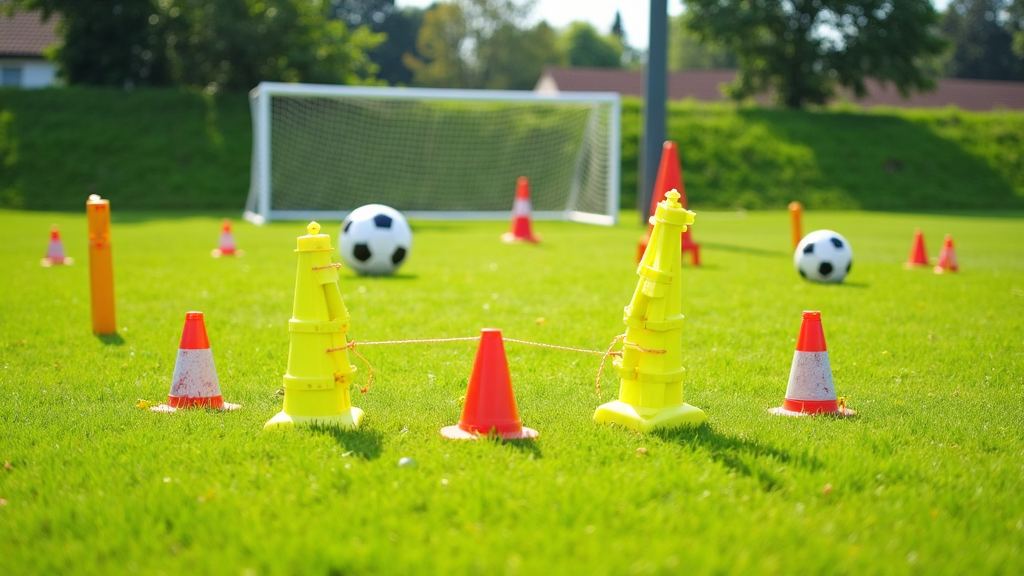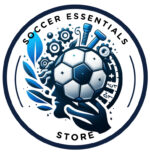Soccer Training Equipment For Kids
Getting kids involved in soccer is pretty exciting, but figuring out which training equipment to pick can leave parents a bit puzzled. Whether your child is just starting out, building skills after school, or already competing, the right soccer gear makes practices more fun and productive. Here’s my take on choosing soccer training equipment for kids, what you really need, and a few tips to help your young player feel confident on the field.

Why Invest In Soccer Training Equipment For Kids?
Soccer training gear opens up all sorts of learning opportunities. Individual pieces of equipment help kids build new skills, practice at home, and gain the confidence to try new things. Using the right gear adds structure to practices and can make skill building feel more like play. A solid setup at home is also handy for keeping young athletes moving during off seasons or downtime.
Getting equipment isn’t only about kicking better or running faster. It helps with focus, balance, and coordination. Plus, it can encourage healthy habits and turn exercise into something kids look forward to instead of a chore. Kids also pick up important lessons about working toward goals. And who doesn’t love seeing a big smile when they finally nail a skill they’ve been practicing?
What Equipment Do You Need For Kids Soccer Training?
Soccer training setups range from simple to advanced. To keep things practical, these are the basics I recommend for most kids just starting out:
- Soccer Ball: Pick the right size. Size 3 for under age 8, Size 4 for ages 8-12, and Size 5 for teens. Lightweight balls make drills safer and easier for small feet.
- Cones and Markers: Flexible cones or ground discs are super useful for dribbling drills, setting up obstacle courses, and teaching good positioning.
- Popup Goal: Foldable goals are easy to set up in your backyard, at the park, or even indoors when space allows. They make solo or group shooting practice way more engaging.
- Rebounders: Mini rebound nets help with passing, first touch, shooting accuracy, and control. All without needing a training partner.
- Pinnies or Training Vests: Simple team vests are useful for keeping kids organized during pickup games or group drills.
- Agility Ladder: This flat ladder is an awesome tool for footwork drills, balance, and overall quickness.
- Ball Pump: Keeping a ball pump handy is a must. A flat ball leads to a dull practice, and keeping the pressure correct helps kids learn on a true roll.
- Shin Guards: Mandatory for most organized games and always worth using for any sort of scrimmage or backyard game.
As your kid gets more involved, you might add things like hurdles, resistance bands, or passing arcs. For beginners, sticking to the essentials is plenty to cover almost every drill they need.
Where Can I Find The Best Kid’s Soccer Training Equipment?
Shopping for soccer gear can feel like a maze, but there are some tried and true spots that make it easy. Brick and mortar sporting goods stores usually carry most of the basics, and you can check ball sizes or pick up a few cones in person. Bigger national chains like Dick’s Sporting Goods, Academy Sports, or even large department stores almost always have the fundamental items.
Ordering online is another option, and I often stumble upon a wider selection and deals this way. Sites such as Amazon, Soccer.com, and Wilson Sporting Goods offer reviews, bundle discounts, and quick shipping. If your child joins a local soccer club, you might get recommendations or even discounts from club partners. For budget setups or just getting a feel for what your kid enjoys, shopping at stores like Walmart or Target also works for most standard gear.
I always double check return policies and read product reviews before buying anything online, especially for equipment that gets a lot of wear and tear or if you’re not sure about sizes. Local clubs also sometimes host used gear swaps, so you might be able to track down gently used items at affordable prices—which can be great if you’re just starting out and don’t want to buy everything new.
How To Prepare Your Child For Soccer
Getting ready for soccer means more than just owning the gear. Helping your child warm up to the sport involves giving them the space and tools to learn at their pace. Soccer can feel a bit overwhelming when starting out, so encouraging tutorials, small drills, and letting them play freely builds both skill and enthusiasm.
Setting up a fun and relaxed “practice zone” at home—even if it’s just a small patch of grass or open indoor space—makes it easier for kids to experiment and explore on their own. Mixing structured drills (like dribbling between cones) with creative play (like aiming at different targets in the backyard) goes a long way toward developing confidence.
Another part of prepping for soccer involves talking with your child about what excites them, what they want to learn, and what feels tough. Encouraging a positive attitude, celebrating small improvements, and keeping things playful all help kids feel ready for practices and games. Remind them that mistakes and missed drills are all part of learning. For younger children, joining you in short practice sessions or friendly challenges in the backyard can keep them feeling supported and motivated.
Quick Start Guide: Building A Home Soccer Practice Kit
Assembling a home kit can be straightforward, even if you have a small yard or only a bit of extra room. Here’s a template for building your first setup:
- Start With The Basics: Grab a good ball and a set of flexible cones. These two items cover almost every solo or sibling drill out there.
- Add a Popup Goal: These are light and easy to take down, and kids love having an actual goal to shoot at.
- Consider a Rebounder: This nets hours of solo practice for passing or shooting without waiting for a friend or parent to play.
- Throw In a Ladder or Hurdles: These extra pieces ramp up speed and agility training while keeping things fresh.
- Don’t Forget Safety: Shin guards and the right shoes help avoid scrapes during more competitive play at home or with friends.
If you’re short on space or just starting, try setting up simple targets—like empty boxes or chairs—so your child can practice accuracy indoors or in small driveways.
Common Hurdles When Using Soccer Equipment With Kids
Even with the right gear, every young athlete, and parent, runs into little challenges. Here are the ones that come up most often for me:
- Keeping It Organized: Balls, cones, vests, and goals will take over a garage or living room without bins or a designated corner. Simple storage bags make cleanup and setup easier.
- Balancing Fun and Practice: Drills are meant to build skills, but too many serious sessions can make soccer feel like work. Mixing training with minigames or friendly shootouts keeps spirits high.
- Dealing With Wear and Tear: Kids will really put gear through its paces. It’s smart to look for well reviewed and durable items, especially for goals, cones, and balls that see daily use.
- Keeping Kids Motivated: Young players sometimes get frustrated if they can’t master a skill right away. Celebrate effort, cheer on progress, and keep things light to avoid burnout.
Some days, the weather just won’t cooperate. When that’s the case, try indoor-friendly drills with soft balls or focus on skills like juggling and footwork that don’t require much space. Being flexible will keep your child engaged no matter the season or weather.
Extra Ways To Help Kids Enjoy Soccer Training
Building a soccer routine kids enjoy is all about variety and encouragement. I like to watch highlights of pro players or youth soccer games with my kids, pointing out eye-catching moves or team moments. You can also set up challenges, such as dribbling as many cones as possible in 30 seconds or working on shooting at home targets (empty recycling bins or lawn chairs make great goals in a pinch).
Community involvement also gives a boost to engagement. Drop by local league games, visit neighborhood pickup games, or sign up for weekend training clinics if they’re available nearby. That way, kids get inspired watching others and building friendships off the field.
And don’t forget, you can join your kids for occasional fun games or assist as a helper during backyard sessions. This helps your child stay motivated and also creates positive memories tied to their soccer practice.
Quick FAQ – Soccer Training Equipment For Kids
Question: Where can I find the best soccer gear for my kid?
Answer: Local sports stores, Amazon, and sites like Soccer.com offer lots of starter sets. If you want personalized advice, ask your coach or local club for their favorite picks.
Question: What gear is most important to start with?
Answer: Stick to the basics: youth sized ball, cones, portable goal, and shin guards. This combo handles nearly every entry level drill and game.
Question: Do I need to buy a full training kit right away?
Answer: Not at all! Many drills can be done with just cones and a ball. Add more equipment as your child’s interest grows or their coach recommends new challenges.
Question: How do I keep soccer training fun for my child?
Answer: Try mixing drills and games, invite friends or siblings, and celebrate every little improvement. Change things up if practices start to feel repetitive.
Final Thoughts
Picking out soccer training equipment for kids doesn’t need to feel overwhelming or expensive. Focusing on a few quality items lets you build skills and have a ton of fun along the way. Whether your child is the next superstar or just wants to burn off some energy, the right tools support both development and enjoyment. Keep it simple, be patient, and remember, positive encouragement can turn any backyard into a field of dreams for your favorite young player.
